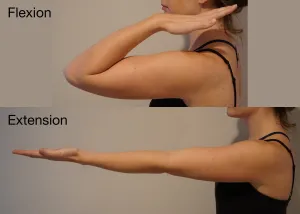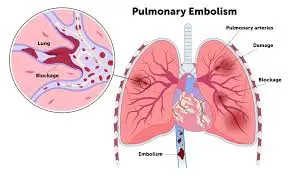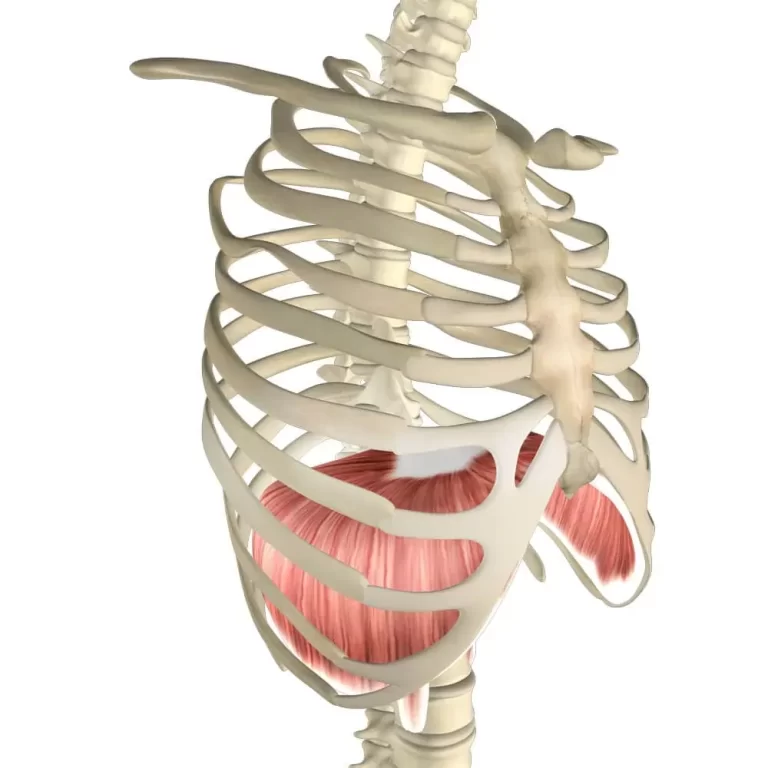Elbow Extension
Elbow Movement
Elbow flexion and extension are motions at the elbow joint that allow the arm to bend and straighten. These movements are required for a variety of upper-extremity actions, including reaching, lifting, and throwing.
What is Elbow Extension?
Elbow extension is the motion of the elbow joint that straightens or extends the forearm. When the elbow is stretched, the angle formed by the upper arm (humerus) and forearm (radius and ulna) widens.
The anconeus and triceps brachii are the two primary muscles used in elbow extension. A small muscle near the triceps is called the anconeus, and the triceps brachii is situated behind the upper arm. These muscles act together to provide the force required to extend the elbow joint.
Elbow extension is necessary in many activities, including pushing, throwing, and doing triceps exercises. It also helps keep the arm balanced and stable during specific actions.
Overall, elbow extension is a movement that straightens or extends the forearm, increasing the angle between the forearm and upper arm. The triceps and anconeus muscles of the upper arm are principally responsible for this movement. Strengthening these muscles with activities like triceps jumps, triceps lifts, and crunches can enhance elbow strength and function.
Elbow Extensor Muscles
The triceps brachii is the major muscle responsible for elbow extension. The triceps muscles are placed behind the upper arm.
Long Head: This head grows from the scapula’s infra glenoid tubercle.
Lateral head: The humerus’ rear arm produces this head.
Medial head: Located directly beyond the spiral groove on the back of the humerus
One tendon that enters the olecranon process of the ulna is formed by the connection of the three triceps heads in the upper arm. When the triceps brachii contracts, it generates the force required to extend the elbow, which causes the forearm to straighten or extend.
The anconeus is a small muscle that aids in elbow extension, much like the triceps brachii. The anconeus muscle begins at the rear of the elbow joint and extends onto the humerus. It is put into the lateral aspect of the ulna’s olecranon process. Although not as large or powerful as the triceps brachii, the anconeus muscle contributes to elbow extension and joint stability.
Exercises including triceps dips, stretch, and close-grip bench presses can improve elbow extension strength and upper arm function.
Range of Motion of Elbow Extension
Between 0 and 10 degrees of hyperextension is the usual range of motion (ROM) for elbow extension. Therefore, the forearm can rest in a slightly extended position or “lean back” up to 10 degrees when completely extended. It should be noted, however, that the precise range of motion varies from person to person.
Elbow extension range of motion is affected by various factors, including anatomical variances, individual flexibility, and potential limits due to injuries or medical problems. For example, following an elbow injury or surgery, the range of motion may be temporarily restricted because of pain, edema, or tissue repair. In these circumstances, rehabilitation and physical therapy are frequently prescribed to restore and improve the elbow joint’s range of motion.
A goniometer, which measures joint angles, is a common tool for testing elbow range of motion. The goniometer is positioned with particular bony landmarks on the upper arm (humerus) and forearm (ulna) to measure the joint angle precisely during elbow extension.
A medical expert, such as a doctor or physical therapist, should be consulted if you have concerns about your elbow’s increased range of motion or if you are experiencing pain or limits. They can offer comprehensive evaluation, diagnosis, and treatment recommendations. adapted to your particular scenario.
Elbow extension Test
The most popular technique for measuring elbow extension is the active range of motion (ROM) or passive range of motion (PROM) test. These tests gauge the range of motion attained during elbow extension and contrast it with the normal or predicted range. The usual procedure for conducting these tests is as follows:
Active range of motion (ROM) test:
- position: The exam subject usually stands or sits comfortably.
- Starting position: Start by putting your forearm perpendicular to your upper arm and bending your elbow 90 degrees.
- Performing the test: Asking the patient to voluntarily extend or straighten their elbow joint as much as possible
- Measurement: The examiner can visually evaluate the degree of extension or measure the angle between the upper arm and forearm using a goniometer.
- Comparison: The observed angle is contrasted with the usual or predicted range of motion for elbow extension, which is normally between 0 and 10 degrees of hypertension.
Passive Range of Motion (PROM) Test:
- Position: The patient is frequently placed in a sitting or lying position.
- Starting position: Place the elbow at a 90-degree bend and the forearm perpendicular to the upper arm.
- How to do the test: To fully extend the patient’s elbow joint, the examiner gently and passively strains or extends it.
- Measurement: The examiner may visually evaluate the degree of extension or use a goniometer to measure the angle between the upper arm and forearm.
The measured angle is then compared to the expected or usual range of motion when the elbow is extended. During both exams, the individual being evaluated should be aware of any pain, discomfort, or limits. Pain or restricted motion may suggest an injury or disease that requires further investigation.
Special test for elbow extension
There are no tests specifically developed to evaluate a single elbow extension. However, several specialized tests can indirectly examine the function and integrity of the structures involved in elbow extension. These tests are frequently used in clinical studies to diagnose a variety of elbow disorders or injuries. Here are several examples:
Cozen Test (Resisted Wrist Extension Test):
Tennis elbow, also known as lateral epicondylitis, is diagnosed by the Cozen Test (Resisted Wrist Extension Test), which measures joint extensor strength.
The patient’s forearm is lying on the table, and their elbow is at a 90-degree angle. The examiner stabilizes the person’s forearm and prevents them from attempting to extend their wrist by maintaining the elbow steady. Lateral epicondylitis is indicated by pain in the lateral epicondyle when the wrist is counter-extended.
Maudsley Test (Resisted Middle Finger Extension Test):
This test is also used to detect lateral epicondylitis, often known as “tennis elbow”.
In this position, the patient sits with their elbow at a 90-degree angle and their forearm resting on the table. By keeping the wrist in a neutral position, the examiner stabilizes the patient’s forearm and prevents them from trying to extend the middle finger. Lateral epicondylitis is indicated by pain or discomfort in the lateral epicondyle while restricted extension of the middle finger.
Mills test (passive elbow extension test):
This test is used to determine whether there is posterior or olecranon impaction. The person is seated with their shoulder abducted and elbow bent at a 90-degree orientation. While maintaining the elbow at a 90-degree flexion, the examiner grasps the subject’s distal forearm and applies a posterior force on it. A rear collision is indicated by pain or discomfort at the back of the elbow.
Tinel’s test:
Tinel’s test, while not unique to elbow extension, can aid in assessing nerve injury, such as irritation or compression of the ulnar nerve. The individual sits with their forearms on the table and their elbows slightly bent. The ulnar nerve on the medial side of the elbow is lightly tapped by the examiner. Pinching or electric shock-like feelings in the ulnar nerve distribution could be caused by entrapment or irritation.
Stretching for elbow extension.
These instructions are for the right elbow. Switch sides with your left elbow.
Lie back on a bed, near the edge. Allow your right forearm and hand to dangle loose from the bed, palm up. Only your upper arm should rest on the bed. Gradually extend your arm until your elbow begins to stretch out. Maintain a relaxed hand position. Hold for 30-60 seconds, or as advised. Then, relax your arm. Repeat two times. Repeat this exercise three times per day, or as directed.
Benefits Of The Elbow Extension Exercise
- Strengthening muscles: Elbow extension exercises build the muscles in your elbow, making them useful for everyday actions such as lifting weights, pushing doors, and carrying groceries.
- Enhancing flexibility: Elbow extension exercises can help you increase the flexibility of your elbow joint and its surrounding muscles. This can help lower the likelihood of injury and strain.
- Pain Relief: Elbow extension exercises can relieve pain and discomfort in the elbow joint, especially for persons with illnesses like arthritis, tendinitis, or post-injury stiffness.
- Enhancing joint functioning: Elbow extension exercises can improve joint lubrication, circulation, and nutrient delivery, allowing the joint to function normally.
- expanded the elbow joint’s range of motion.
Elbow Extension Exercises
The following exercises might help you strengthen and enhance your elbow stretch.
Triceps dip:

This exercise, which targets the triceps brachii muscle, can be performed with parallel bars or a solid chair. Position yourself between the directional strips or rest your hands on the seat edge, fingers pointing forward. Extend your legs straight out in front of you, lifting your torso off the floor or chair and supporting your weight with your arms. Bend your elbows to bring your upper arms parallel to the floor, then slowly lower your body. Extending your elbows, you can return to where you were before. Repeat eight to twelve times.
Precaution: Avoid jerky or unexpected movements when doing the exams. If the person being tested develops pain or discomfort at any time during the test, immediately stop the test and assess the situation.
Strengthening Exercise For Elbow Extension

Elbow Extension With Weight
Stand straight and tall with foot shoulder-width apart. Using a dumbbell or therapeutic band, elevate the weight close to your shoulder while bending your elbow gradually. The weight is then progressively lowered to your hip. After holding for a few seconds, go back to where you were before. Repeat eight to twelve times.

Elbow Extension Exercise With Theraband
The resistance band should be wrapped around a solid, steady object. Your chest and the band should be level. Using your other hand, hold one end of your therapeutic band at shoulder height. Then, using the arm As you strengthen, pull down on the band and straighten your elbow. Repeat 10-20 times, 2-3 times daily.
Elbow Extension Exercise With Cable Machine
With a single grip handle attached to a high pulley wire, choose your stack weight. Taking an overhand hold on the handle while standing in front of the machine. Pull your elbow down to your side and keep it there for the length of the set. Press down on the handle until your elbow is completely stretched. Hold it for a few seconds before relaxing into the beginning position.
Manual Muscle Testing: Elbow Extension
The muscles involved are:
Triceps brachii
Anconeus
Innervation: Radial nerve
Patient’s position
In the prone position, the patient’s test side shoulder should be abducted to a nearly 90-degree angle. The patient’s inspected side forearm is hanging on the bedside. The bed should support his upper arm until it reaches his elbow.
To evaluate grades 0-2, the patient should be in a position with the least amount of gravity. Place your feet flat on the ground and sit on a supporting seat. The shoulder’s position remains constant.
Therapist’s position
When performing manual elbow extensor muscle testing at all grades, the therapist should remain at the patient’s side. The therapist may need to change their position slightly depending on the grade being assessed.
To avoid injury to themselves and the patient, the therapist must use proper body mechanics and avoid exerting too much force during the test.
How do I test?
Explain your planned procedure to the patient before starting the MMT.
Place the patient in a seated position, with their arm resting on a table or another solid surface.
Ask the patient to stretch their elbow as far as possible.
Depending on which grade is being assessed, apply resistance to the patient’s hand or wrist.
For grade 3, offer mild resistance to the patient’s wrist or hand while they extend their elbow.
For grade 4, apply mild resistance to the patient’s wrist or hand while attempting to extend their elbow.
For grade 5, apply severe resistance to the patient’s wrist or hand while attempting to extend their elbow.
Examine the patient’s strength and note any weakness or inability to complete the movement.
Do the test again with the other arm if required.
Note the outcomes in the patient’s medical file.
FAQs
What are the 2 main elbow extensors?
Extension: triceps brachii and anconeus.
How much elbow extension is normal?
The usual range of motion for elbow extension is 0 to 10 degrees beyond neutral (when the arm is completely extended and parallel to the torso). However, the actual range can vary according to age, gender, and individual variances in anatomy and flexibility.
What causes a lack of elbow extension?
Elbow stiffness and contractures, which cause loss of motion and difficulties performing daily activities, can be caused by trauma, osteoarthritis, elbow surgery, or a congenital disorder.
Which nerve does elbow extension?
In full extension, the ulnar nerve takes a complex path, then becomes more linear with incremental elbow flexion, shifts anteriorly in the cubital tunnel, and flattens against the medial epicondyle.
How to test elbow extension?
The patient extends his or her elbow as far as feasible while supine or upright. The patient’s ability to reach full extension will be assessed by the examiner.
References
- Patel, D. (2023d, June 29). Elbow Flexion and Extention Movement, ROM, Exercise, Muscle. Samarpan Physiotherapy Clinic. https://samarpanphysioclinic.com/elbow-flexion-and-extention/
- Thera-Band Elbow Extension in Sitting – Performance Health Academy. (n.d.). https://www.performancehealthacademy.com/thera-band-elbow-extension-in-sitting.html
- Elbow Extension (Flexibility). (n.d.). Saint Luke’s Health System. https://www.saintlukeskc.org/health-library/elbow-extension-flexibility







